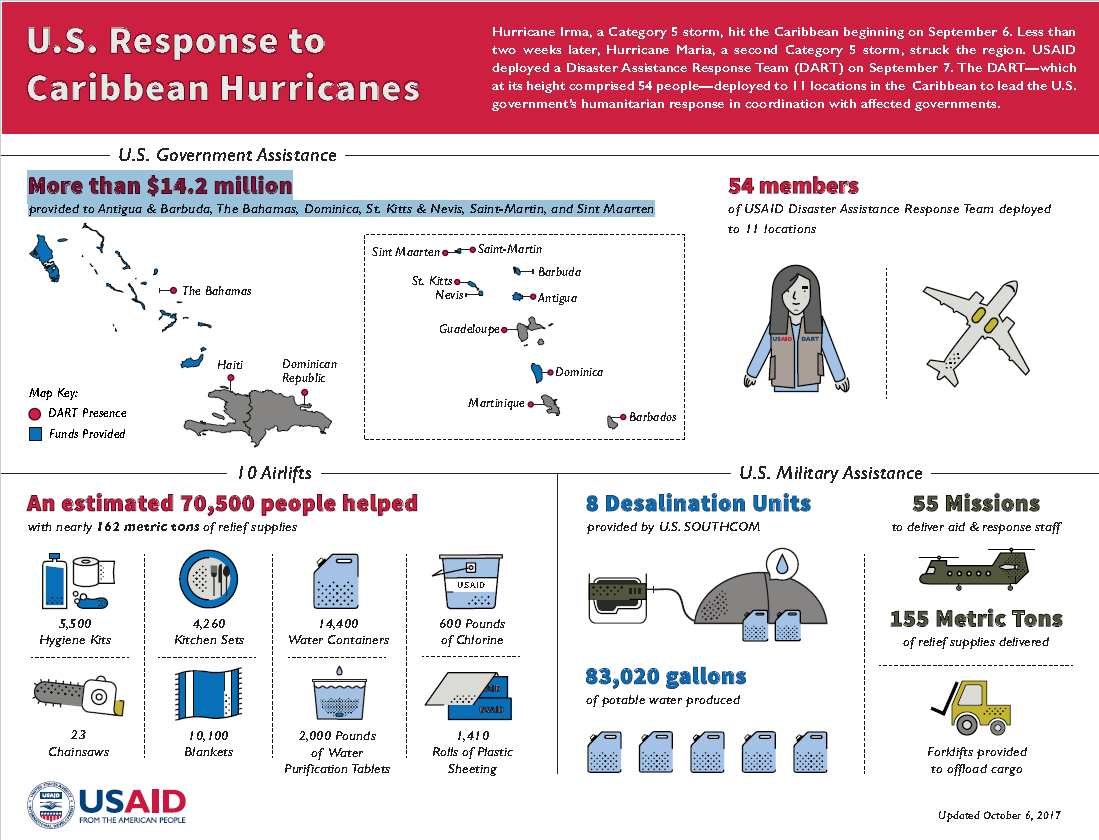On September 11, three members of the USAID regional Disaster Assistance Response Team (DART) arrived on the island of Antigua to conduct damage and needs assessments in Antigua and Barbuda and lead the U.S. Government (USG) response, in coordination with the Government of Antigua and Barbuda (GoAB), the Caribbean Disaster Emergency Management Agency (CDEMA), and other relief stakeholders.
The below is attributable to Acting Spokesperson Clayton M. McCleskey:
On September 11, U.S. Agency for International Development (USAID) Administrator Mark Green spoke on the phone with the UK Secretary of State for International Development Priti Patel. Administrator Green reiterated U.S. support for the people of the Caribbean, and he extended his thoughts and prayers to the people of the Caribbean British overseas territories.
The below is attributable to Acting Spokesperson Clayton M. McCleskey:
On September 11, United States Agency for International Development (USAID) Administrator Mark Green spoke by phone with the French Minister of the Interior, Gerard Collomb, and the Director-General of the French Development Agency, Remy Rioux, to offer his condolences to the people of Saint-Martin in the wake of Hurricane Irma's devastation.
Between September 9 and 10, Hurricane Jose passed approximately 75 miles northwest of the island of St. Martin—composed of the French territory of Saint-Martin and the Dutch territory of Sint Maarten—with maximum sustained winds of nearly 130 miles per hour, according to international media and the National Hurricane Center (NHC). Tropical storm conditions, including strong gusts and swells, affected parts of the northern Leeward Islands—including St. Barthelemy and St. Martin—and the British and U.S. Virgin Islands, NHC reports. Overall, the storm caused less damage than expected in the Caribbean region, according to initial reports from relief stakeholders.
The National Hurricane Center (NHC) expects that Hurricane Jose will affect the northern Leeward Islands—including the islands of Anguilla, Antigua and Barbuda, St. Barthelemy, St. Martin, and St. Eustatius—through the evening of September 9 before proceeding into the open waters of the North Atlantic Ocean. The storm is bringing sustained winds of approximately 120 miles per hour (mph), storm surge of up to 3 feet, and up to 6 inches of rain to affected areas, according to NHC forecasts.








Comment
Make a general inquiry or suggest an improvement.